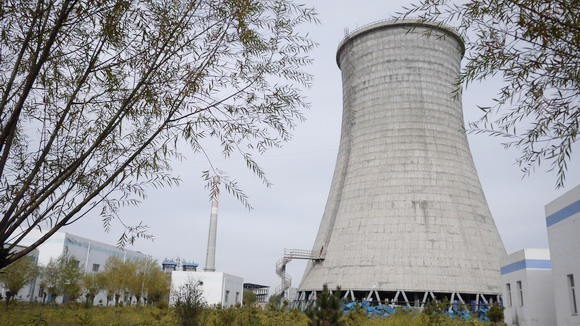New Economic Model Breathes Life into Desert Control
China Daily, November 6, 2013 Adjust font size:
Up until now, more than 240 km2 sand land has been greened. And the psammophila cut down are generating 200 million kilowatt-hours of electricity each year at the company's two power plants, bringing down carbon emissions by 250,000 tons annually. And over 7,000 local farmers or herdsmen are thus benefiting.
But this is not the end of the story just yet.
"The company has been losing money for five consecutive years due to various reasons," said Li Jinglu, chairman of the company. "Partly because the income generated from biomass electricity alone cannot offset all expenses along the years."
According to Li, the company has poured about 700 million yuan (US$114.4 million) so far into afforestation and power plants in the region, with an accumulated loss of 225 million yuan.
"As much as we admit that there are enormous social benefits by mobilizing local people to green the desert, it won't be sustainable as long as the company is in a deficit," said Li Junyang, general secretary of the International Energy Conservation Environmental Protection Association, or IEEPA.
IEEPA, a non-governmental organization dedicated to energy conservation and sustainable development in China, has been a big player in pushing forward the company's low carbon drive while teaming up with the United Nations Industrial Development Organization (UNIDO).
On August 12, they jointly launched a project in Beijing to build an international green energy demonstration base in Erdos, in hopes to boost biomass energy development by integrating desert control and spirulina cultivation.
|
|
|
One of the company's biomass power plant is seen in Erdos, Oct 20, 2013. [China Daily] |
A silver lining
After eight years of struggling, the company has figured a way out to extend the value chain of biomass electricity generation, hoping to escape their financial mire and further cut carbon emissions.
They began cultivating spirulina, a high-protein health-care product with a huge pent-up demand in China, by utilizing carbon dioxide emitted from burning psammophila since 2011.
"By normal practice, spirulina cultivation uses carbon dioxide released from dissolving lime stones, most of which will end up unutilized and escaping to the air due to the gas's low solubility in the water," Li Jinglu explained.
"But here we are capturing carbon already emitted from burning psammophila, while creating an alkaline water environment for it, where the gas's solubility will rise remarkably," he added.
He said this process could further cut carbon emissions by 150,000 tons a year, and uplift the products' quality in the meantime. "Such a practice is unprecedented worldwide."



